The extremely offline president and his extremely online fan club
Vladimir Putin maintains no known personal
The extremely offline president and his extremely online fan club

Vladimir Putin maintains no known personal social media presence but his fans and impersonators have filled the void

As most world leaders increasingly turn to social media to communicate directly with the public, Russian President Vladimir Putin has left an online void, publicly stating that he maintains no personal social media account. That said, for somebody with a track record of lies supported by a mostly controlled media apparatus that propagates supportive messaging, it is somewhat surprising that the Russian president would not use an official social media presence to cement the favorable narratives and distort public perception. Users on Facebook as well as Instagram have compensated for the Russian leader’s lack of an online presence by creating dozens of pages and accounts using his identity.
The DFRLab surveyed 69 Facebook pages that used Putin’s identity in the form of a profile image and a variation of his name, “Vladimir Vladimirovich Putin.” Many of the pages did not outwardly impersonate Putin: almost a third specified that they were fan accounts. A little over a fourth, however, did appear to masquerade as Putin’s personal pages by stating it outright or providing no acknowledgement that they had adopted Putin’s identity as their own. Regardless, these pages used Putin’s image and the personal brand he has cultivated over the years to glorify him, as well as to disseminate pro-Kremlin narratives to a Russian-speaking audience.
Two large pages that used Putin’s identity targeted Facebook users in the Middle East and North Africa but were operated from Russia. Russia was the location of five out of 29 Facebook pages that also used Putin’s identity. The locations of the other 24 pages covered all the continents of the world, except Antarctica.
The total follower count of the Facebook pages was 5,678,752 pages and accounts, which is 37 percent larger than the set of Putin-aping Instagram accounts (with 4,135,642 followers in total) discussed below. The Facebook pages had 82,301 followers on average, but half of the pages had less than 2,163 followers, indicating that there were a few pages with very large audiences. In fact, two pages had 3,383,046 combined, comprising 60 percent of the total number of followers.
Putin’s biggest fan page
The largest page, “Vladimir Putin,” had 2,067,835 followers and disclosed that it was a fan page. This page acquired half of its follower base over a course of eight months, with a high spike in growth in October 2015, with an immediate leveling off.
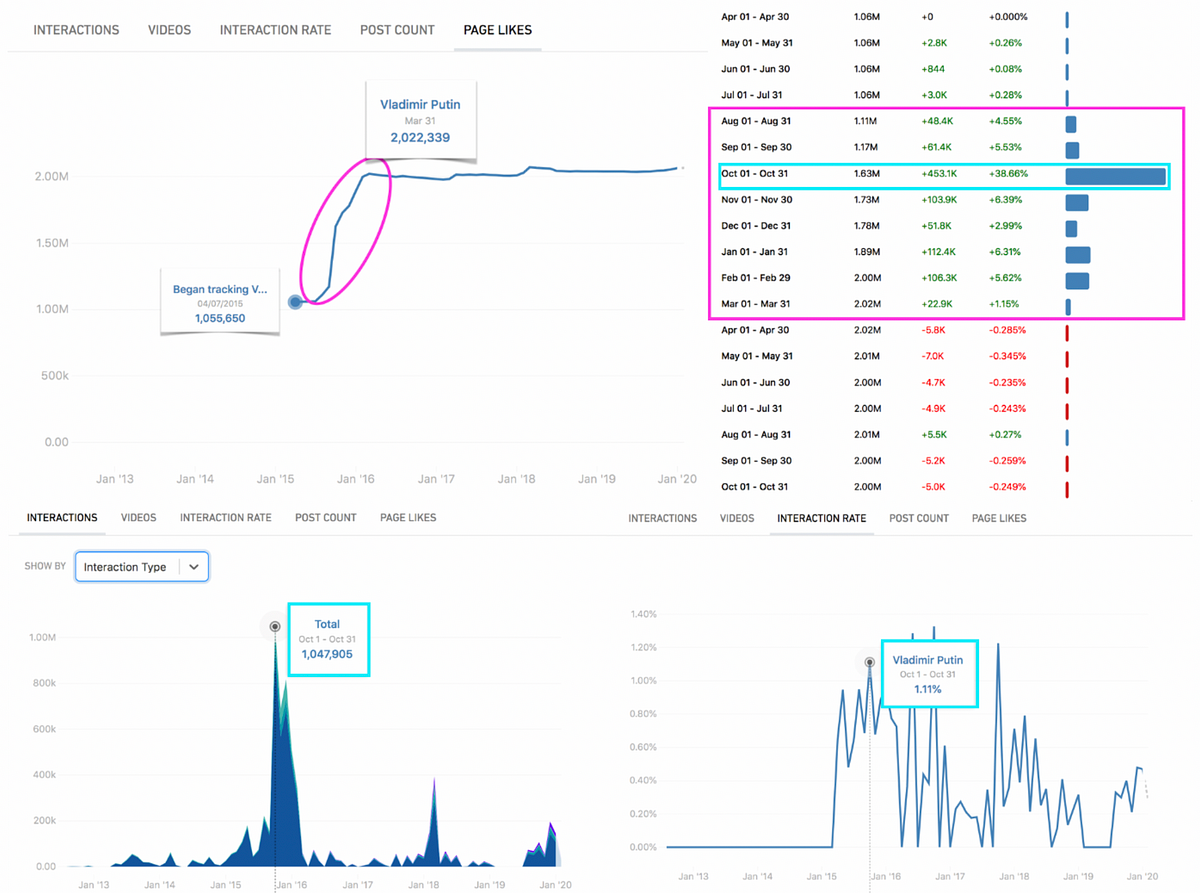
The most engaged-with content in October 2015, according to CrowdTangle, were images of Putin and birthday congratulations in Russian, English, Serbian, and Arabic.

These posts each tagged several dozen Facebook accounts, likely to gain visibility. The DFRLab did an experiment and tried to tag a Facebook profile with one of the images above but could not, suggesting that the tagged accounts did not tag themselves.
Each post tagged a different set of accounts, but there was a slight overlap: some accounts were tagged in two posts or more. Most of the accounts did not have a public friends list, but those that did had from 600–4,000 friends and were geographically diverse, coming from Vietnam, Iraq, Afghanistan, Germany, Russia, and elsewhere.
The page also posted videos about Russian military activity in Syria with accompanying text in English and Russian.
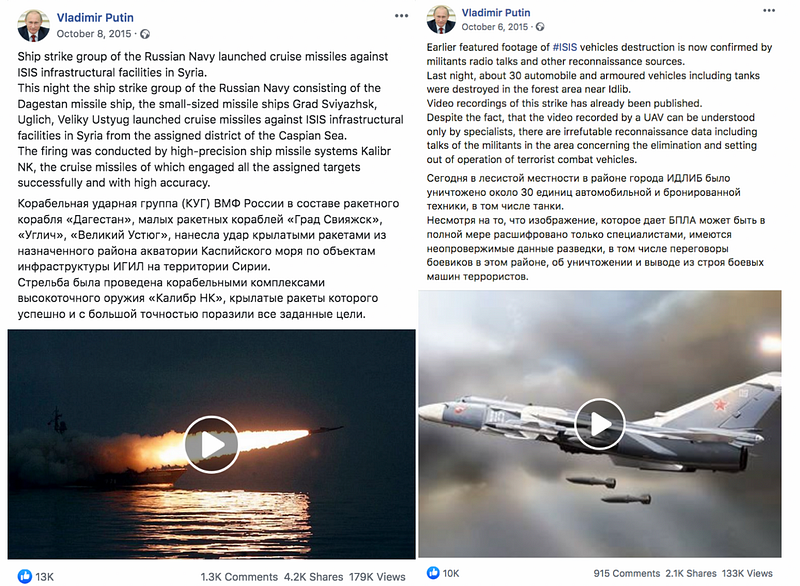
The videos did not garner as many likes and comments as the images but garnered a similar number of shares.
Putin’s page for the Arab World
The second largest Facebook page using Putin’s image had 1,315,211 followers and also posted about Russia’s military presence in the Middle East. Its name, الرئيس الروسي فلاديمير بوتين, translated from Arabic was “Russian President Vladimir Putin.” The page’s audience grew rapidly from January 2018 until April 2019 and then started to gradually decline. According to the Facebook Ad Library, the page ran ads from May 2018 until July 2019, a means of paid-for audience growth. The time does not completely overlap with the rapid audience growth, though. It happened as the page garnered a lot of engagement, although the initial spike in August 2019 preceded the growth due to the ad campaign.
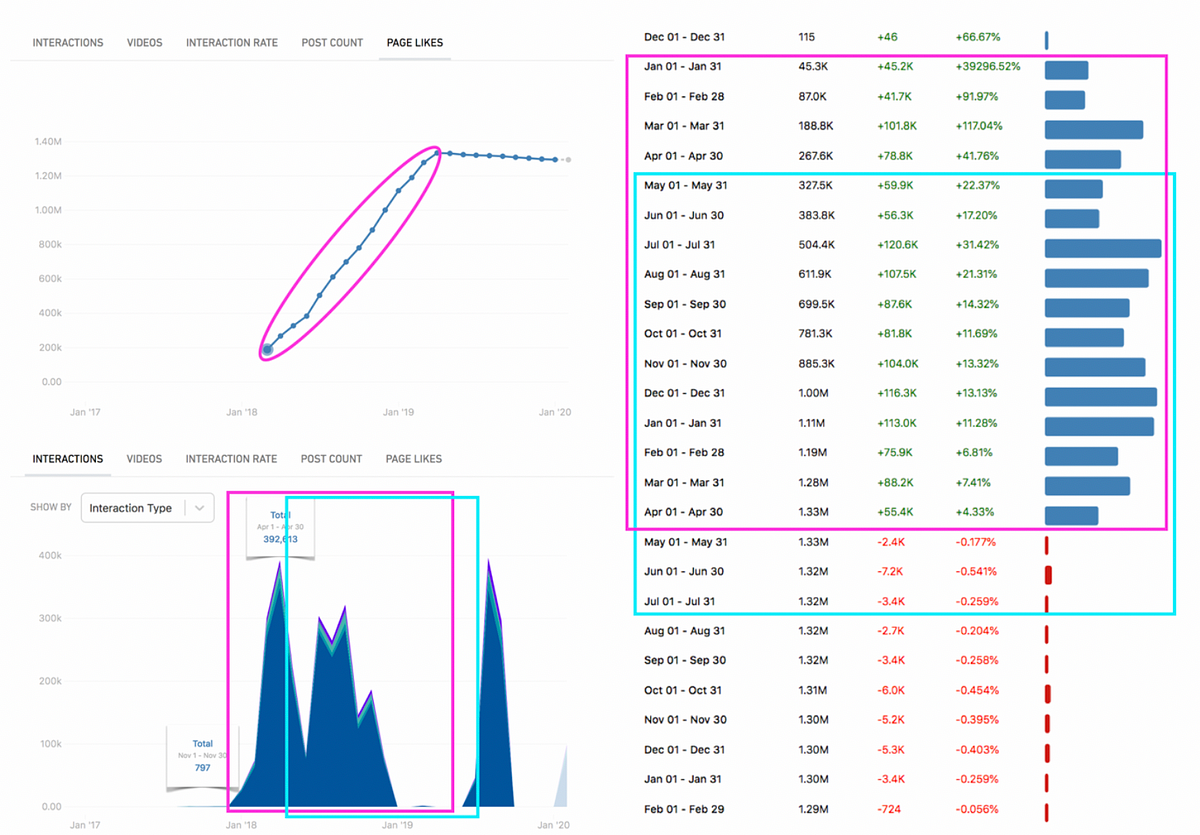
The period during which the page paid for reach did not explain how it garnered followers prior to the ad campaigns nor why followers started unsubscribing while the page continued to pay for ads. The same was true for interaction volume: the page garnered a large number of interactions prior to paying for reach and lost it all while still paying for reach.

The page’s interaction count correlated with the post count at the moment of abrupt growth and the beginning of the paid promotional campaign. In other words, the more the page posted, the more interactions it garnered in total. The spike in interactions in August 2019 also correlated with the spike in post count, which suggested that the page achieved a stage where it got a similar amount of engagement for each post. The page could have achieved these results by consistently posting engaging content or by paying for followers and engagement.
The top posts by the total number of interactions in April 2018 (one month before the first ad) were about Russia and its military activities, particularly in the Middle East.
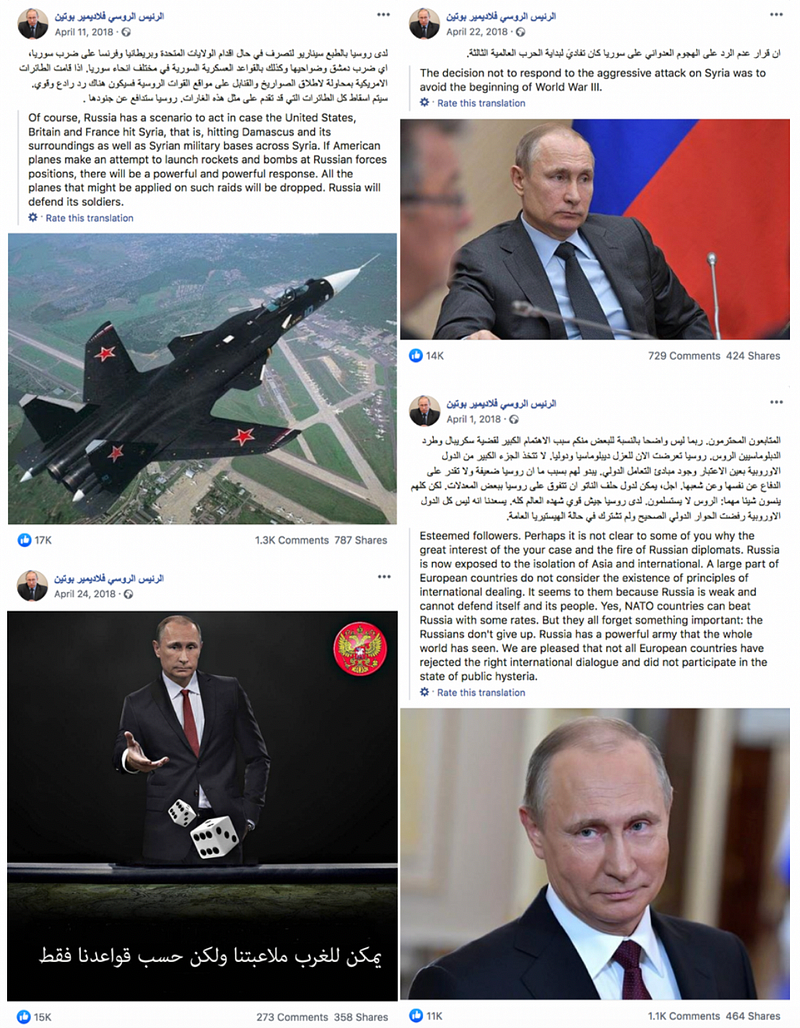
The ads in June 2019, the month during which the page paid to promote the largest number of posts, were about the opening of a mosque in Crimea, large Russian families receiving money to pay for their mortgages, Russia building a large missile on its own, the socially conscious policies of Russia, the integrity of Russia’s foreign policy, and Russia’s willingness to work to improve the quality of life for Russians.
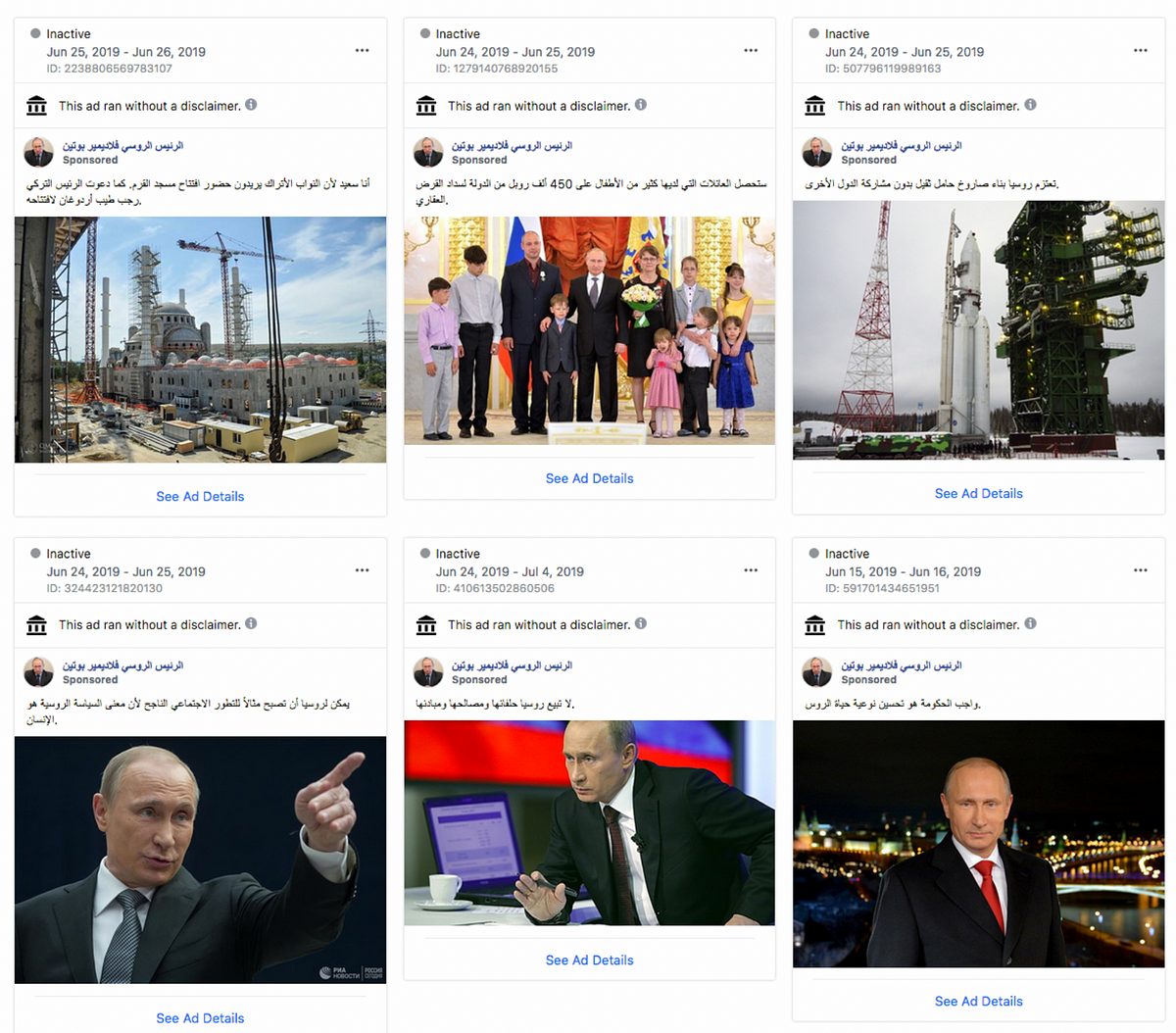
The comparison of the content that garnered organic engagement versus paid interaction showed that the page wanted to portray Russia as a socially and economically strong state, while followers most engaged with the content that explained Russia’s foreign policy actions in the Middle East.
Although the follower base of both pages grew suddenly, slowed, and then declined, interaction volume mostly overlapped with audience growth. The strategies of tagging user accounts and using paid promotional content likely explain some of the rapid follower growth of the pages. While it is possible to buy followers and interactions on Facebook, there were no conclusive indicators that these pages engaged in those forms of inauthentic audience growth.
Location
Both pages described above were operated from Russia, and one had an additional page manager based in Latvia.
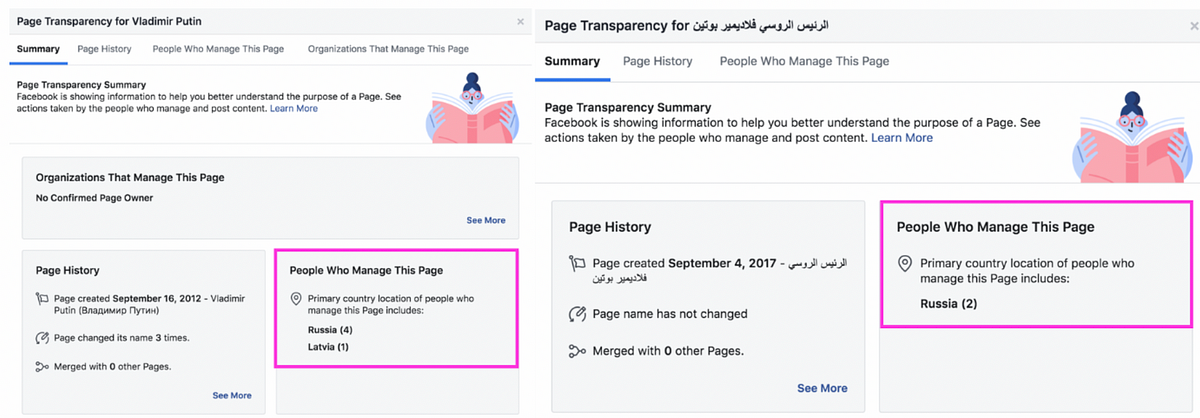
The Facebook page transparency sections of all of the pages provided location data for 29 out of 69 pages (42 percent). While five pages were operated from Russia, several had page managers from the United States, Serbia, Mexico, the United Kingdom, and the Czech Republic.

Most of the pages that operated from abroad used the display name “Vladimir Putin” or “Vladimir Vladimirovich Putin,” but there were also pages named Vladimir Putin The Leader Of The World (operated from Greece), Vladimir Putin Beloved Wise President Of Holy Mother Russia (operated from the United States), and Vladimir Putin — Judo Master (also operated from the United States).
In addition, most of the pages with a listed location for their administrators promoted Putin and/or Russia in general. There were a few pages that shared jokes, pro-Kremlin narratives, or completely unrelated content, however.

The content analysis of pages with known page manager locations showed that the pages promoting Putin operated from all over the world.
The page الرئيس الروسي فلاديمير بوتين was the only page to use paid advertisement, according to the page transparency sections. Its ads targeted audiences in North African countries, including Algeria, Libya, Egypt, Yemen, Morocco, Lebanon, and Tunisia.

The DFRLab found at least 20 accounts on Instagram that used his identity — in the form of his name and photo — and posted supportive content. Some of the accounts did not explicitly disclose that they were fan pages, and at least two accounts showed signs of inauthentic follower acquisition.
The Instagram accounts, the oldest of which was created five years ago, reflected the personal brand Putin and his inner circle have cultivated of him since his rise to power in 1999: the image of a powerful, masculine, and hardened leader of Russia. Most of the accounts operated in Russian, which suggested that the content was targeting Russia’s domestic audience as well as a Russian-speaking audience abroad.
Inauthentic activity
The DFRLab identified 20 Instagram accounts that used Putin’s identity and image, either in impersonation or in tribute. Neither Putin himself, nor his administration, have a known Instagram account (his administration only maintains Twitter and YouTube accounts). Nevertheless, the Putin-boosting accounts had 4,135,642 followers in total and 206,782 followers on average. Every three out of four accounts (75 percent) posted in Russian. Only one account posted in English, while a second posted in English and Russian, and a third in English, Russian, and French. One account only used hashtags to promote its content, and another account was private.
The most popular account, named “putin.life,” had 1,018,022 followers and had 1,239 posts, which is half that of the other accounts’ average total post count (3,078 posts).
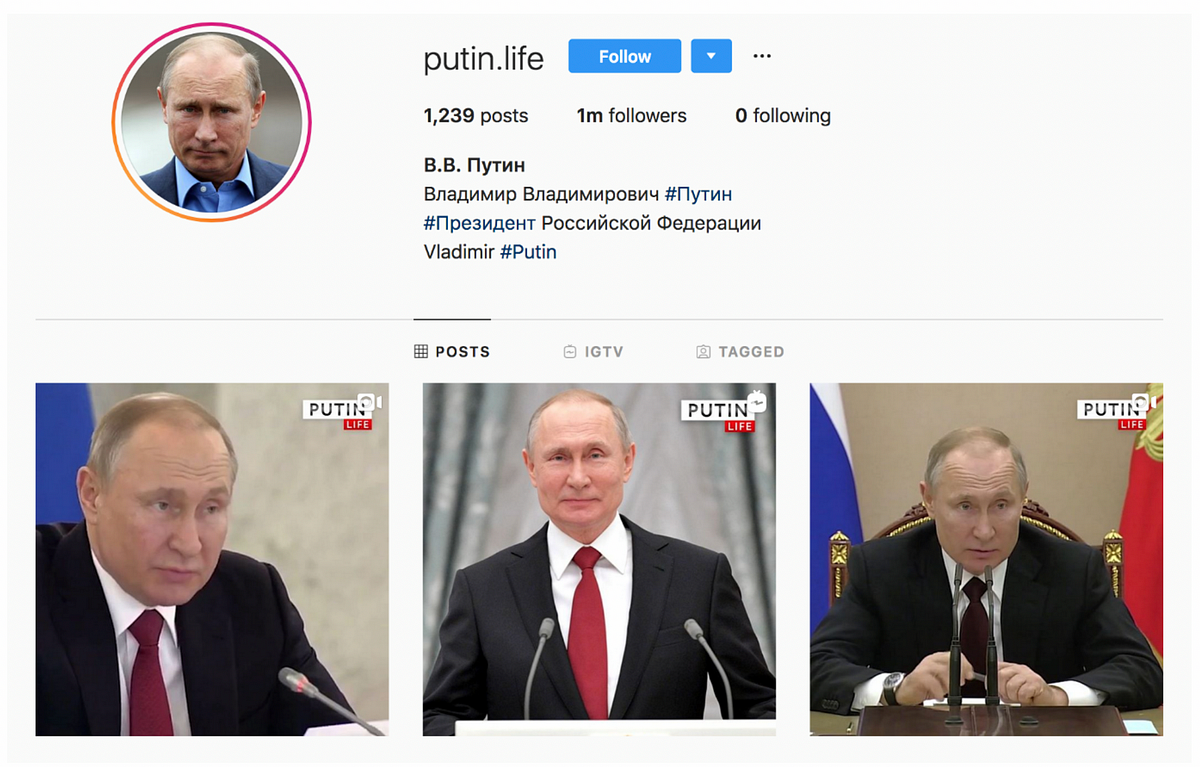
CrowdTangle, a social listening tool for Instagram and Facebook, indexed the account in its database on June 29, 2017, when it already had 188,565 followers.
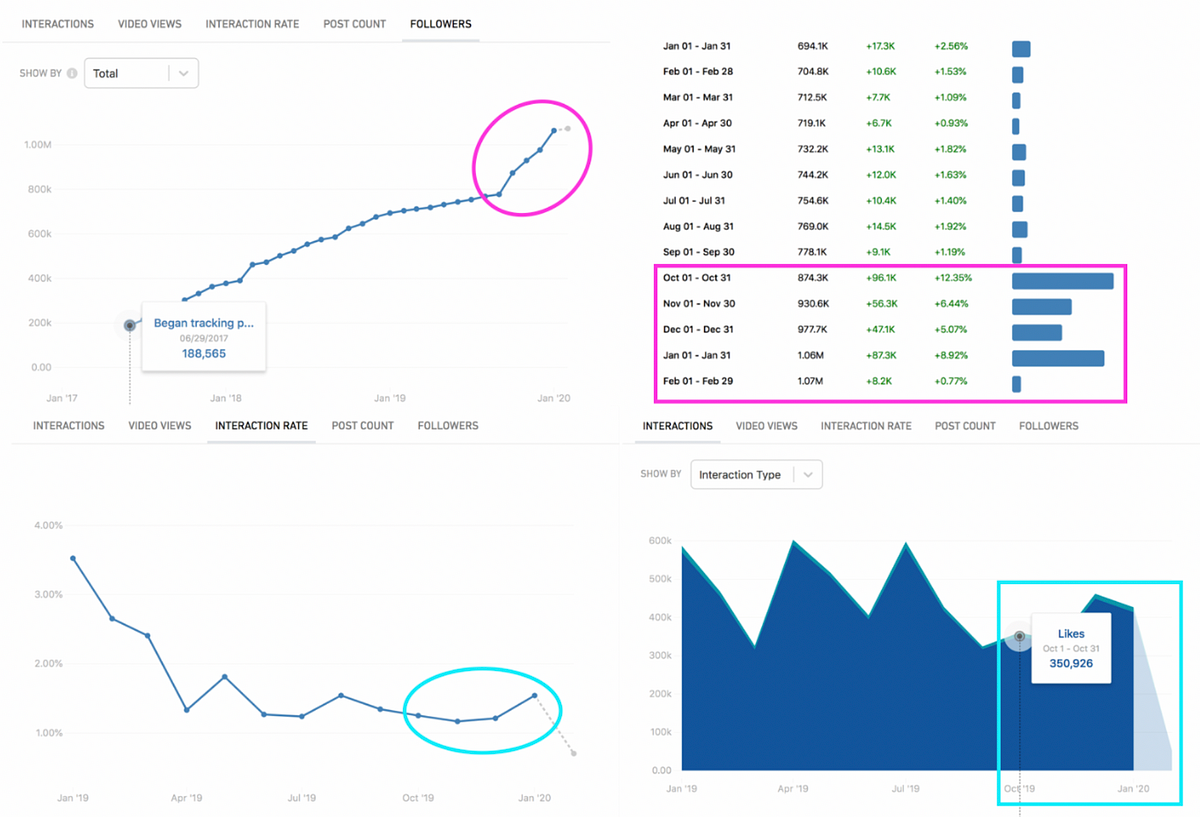
Data showed that the account’s follower base experienced a rapid spike (pink boxes above), while its interaction rate and total number of interactions (blue boxes above) were significantly lower than in the beginning of 2019, when the follower growth was more steady.
These patterns may indicate inauthentic follower acquisition on the part of the accounts. A recent study by the NATO Strategic Communication Centre of Excellence (NATO StratCom COE) suggested that Instagram is one of the cheapest platforms to manipulate by buying followers and engagement.
CrowdTangle had data for 11 out of the 21 Instagram accounts the DFRLab identified. Among them was a second account that may have bought inauthentic followers on Instagram. The account, putin_leader, was the second-largest in the set by February 6, 2020, and had a significant follower count increase in December 2018, June 2019, and July 2019 (pink boxes below).

Again, the total number of interactions and the interaction rate was lower than before, when follower growth rate was steady (blue marks above).
Analysis of the rest of the available accounts on CrowdTangle was inconclusive, which does not preclude the use other means of garnering followers and interactions such as buying likes.
Content
About 90 percent of all accounts posted content that glorified Putin or Russia.
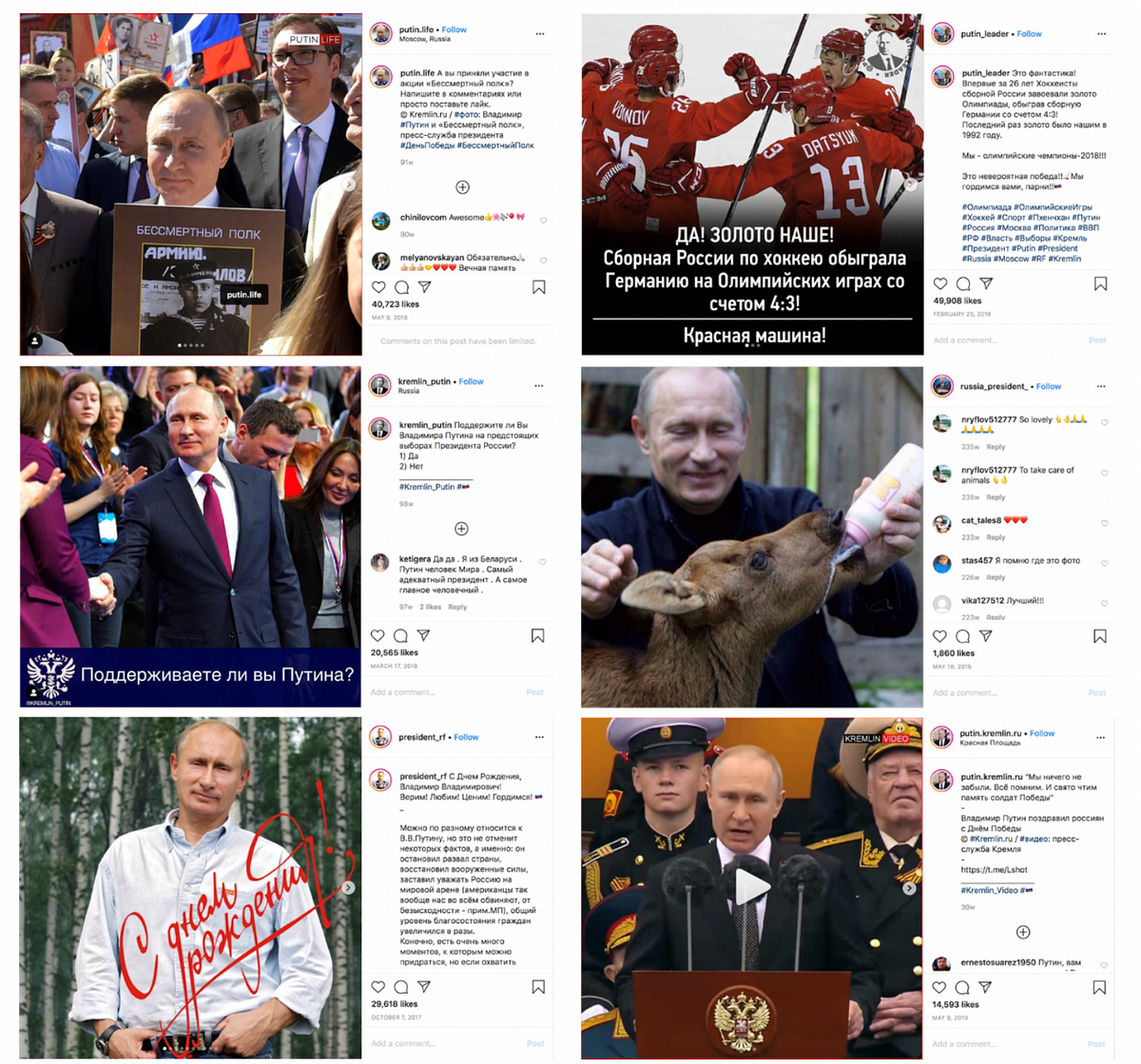
The posts that garnered the highest engagement rate (number of likes and comments relatively to the follower base at the time the post appeared), as seen above, on the top six most followed accounts as of February 6, 2020, garnered between 1,860 and 49,908 likes.
Only two accounts — “putin_my_leader” and “putinvvz” — posted jokes and quotes, though they too portrayed Putin positively.
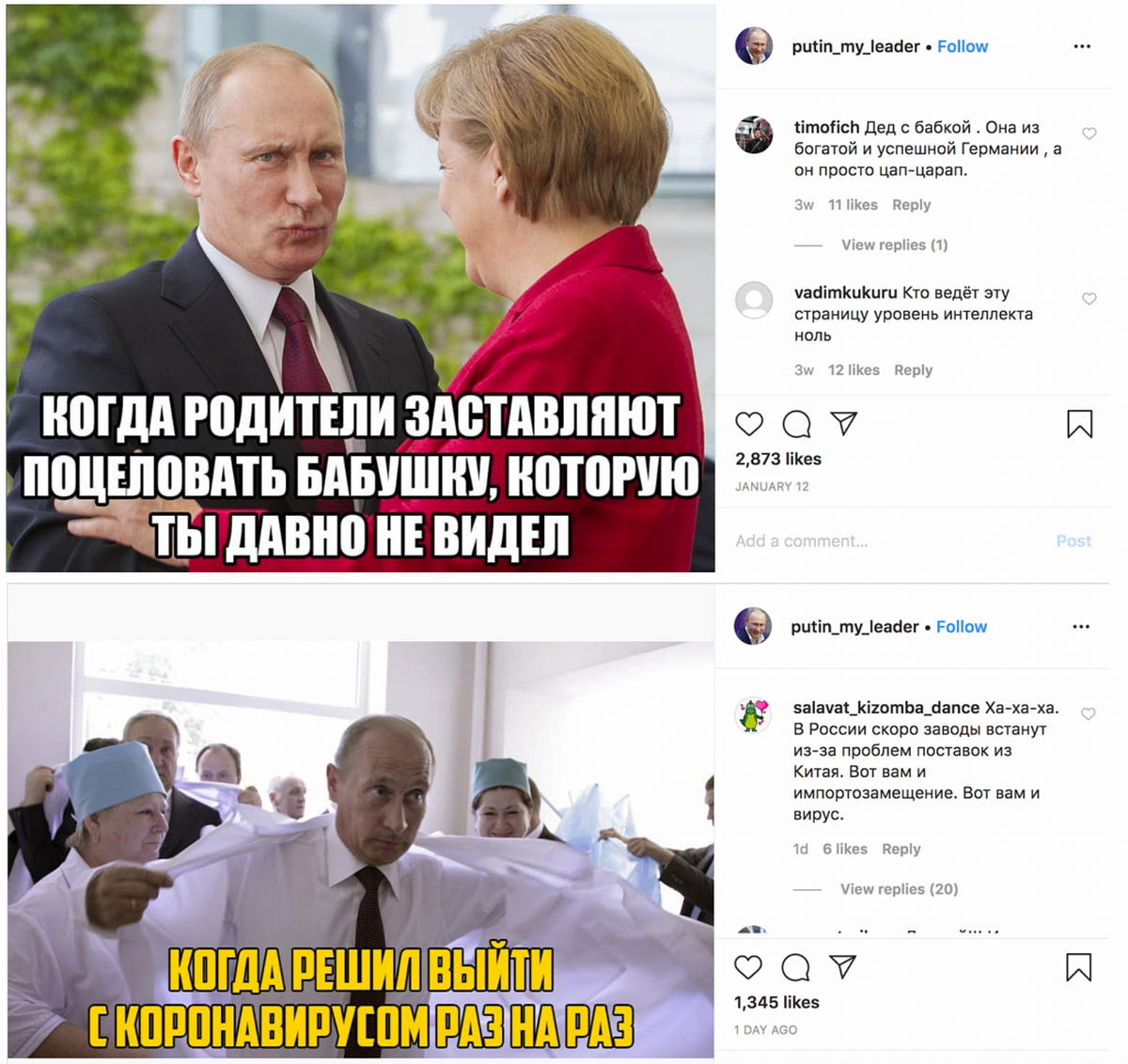
Conclusion
The analysis of the two largest Facebook pages that used Putin’s identity showed suspiciously abrupt growth and decline in audience acquisition. The aggressive use of promotion strategies, such as tagging individual Facebook users from diverse geographic areas and paying for reach in North African countries, only partially explain the abrupt audience growth both pages experienced.
Overall, about a third of the pages disclosed that they are fan pages, but another third of the pages were clearly masquerading as official pages belonging to Putin. Putin’s lack of presence on Facebook seems to have allowed impersonators to proliferate, in a potential violation of Facebook’s Community Standards.
As for Instagram, while Putin has no known personal social media accounts, a number of accounts on Instagram act as his digital fan club, using his identity and brand to portray a positive of him. Seventy-five percent of the accounts posted in Russian, suggesting that they primarily targeted a Russian-speaking audience. Furthermore, the two most-followed accounts may have used inauthentic means for follower acquisition, such as buying followers.
Nika Aleksejeva is a Digital Forensic Research Associate with the Digital Forensic Research Lab (@DFRLab) and is based in Latvia.
Follow along on Twitter for more in-depth analysis from our #DigitalSherlocks.

